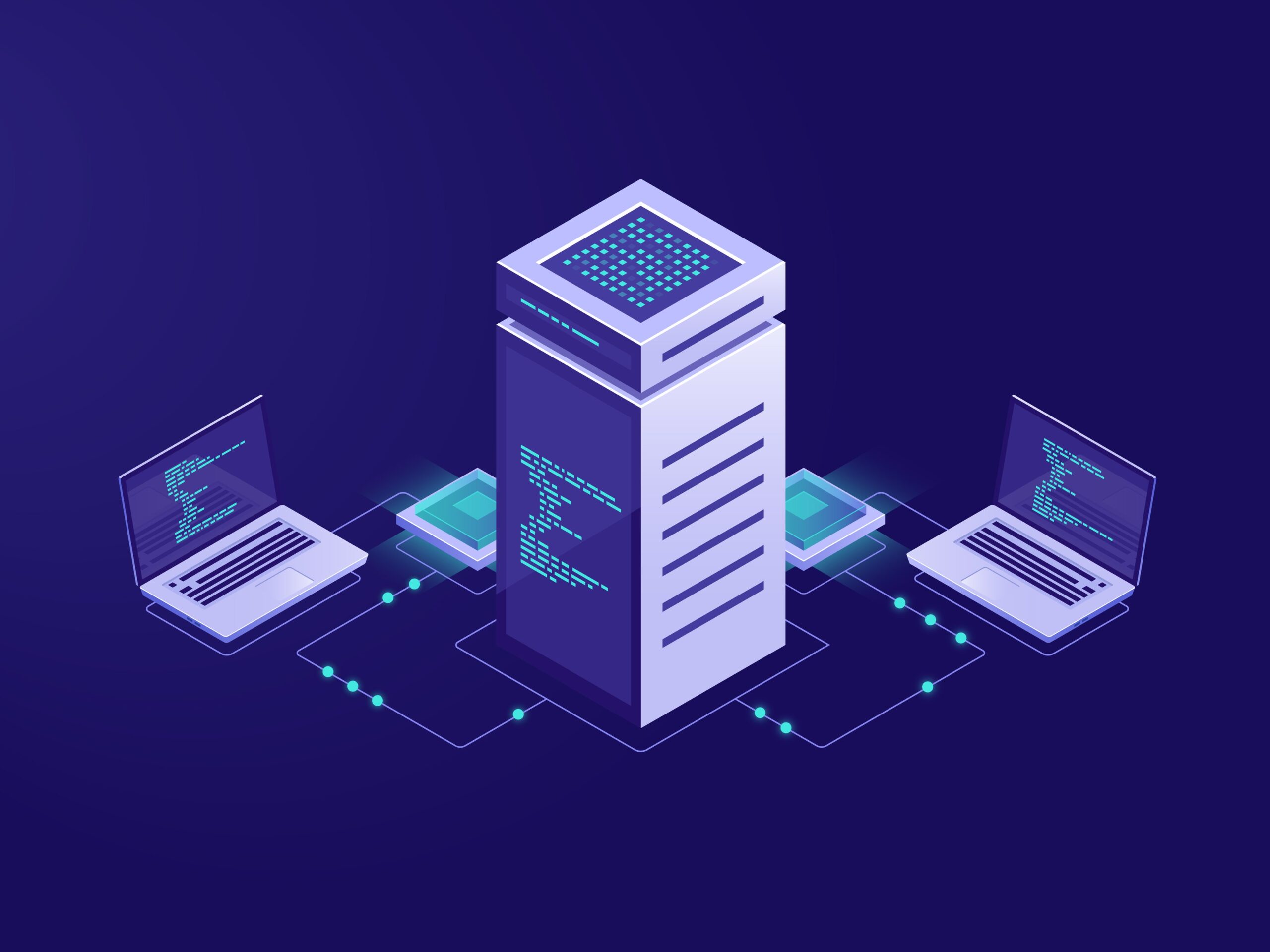Empower Your Enterprise with Service Orchestration Microservices
Discover how service orchestration and microservices can improve your business processes.

Microservice architecture has gained popularity through the rise of data generation and vast technological advancements. Microservices allow businesses to deliver large-scale applications quickly, and are a common approach for building modular, scalable software with autonomous functionality.
Microservices break up large complex products into individual services, each responsible for a specific business function, like user authentication, for example. In order to perform a business task, a microservice-based application may require several services to interact with each other. The coordination of these interactions is known as workflow or saga. There are two different methods for implementing a microservices-based workflow: microservices orchestration of microservices choreography.
As orchestrated systems have been more expansive and complex, it has become more challenging to efficiently orchestrate related business processes and logics. Through the use of robust IT automation tools like ActiveBatch, teams can more easily utilize microservice orchestration.
What is microservice orchestration?
Microservice orchestration is the process of managing and coordinating individual microservices in a larger, distributed system. Because microservice management can become complex with the various independent services, microservice orchestration helps coordinate the workflow effectively.
The goal of microservice orchestration is to ensure that each service is functioning properly and communicating effectively with other services in the larger system, while also maximizing performance, scalability, and reliability.
Orchestration tools and frameworks help automate and streamline the management of microservices. Features often include service discovery, load balancing, health monitoring, advanced service composition, and workflow management.
What are Service Orchestration Microservices?
Service orchestration microservices are used to break down complex business processes into smaller, reusable components that can be independently developed and deployed. These microservices can then be orchestrated together to create more complex workflows, without the need for a monolithic application. ActiveBatch provides a comprehensive service orchestration microservices platform that allows businesses to streamline their workflows, reduce development time, and improve scalability.
Service orchestration microservices typically handle tasks like service discovery, load balancing, and routing of requests between different microservices. They can also manage more complex interactions between microservices including coordinating multiple services to complete a single task or workflow.
A common approach to service orchestration is using a dedicated orchestration tool or framework, like Kubernetes, Docker Swarm, or Apache Mesos. These tools provide a range of features for managing and coordinating microservices, from deployment to scaling and monitoring to resource allocation.
Another approach to service orchestration using a more lightweight, custom-built microservice that specifically handles the coordination and management of other microservices. These custom-built orchestrator microservices can be designed to fit the specific needs of a system, making them more flexible and adaptable.
Microservice Orchestration vs Microservice Choreography
Microservice orchestration and microservice choreography are two different approaches to managing and coordinating interactions between microservices in a distributed system.
Microservices orchestration is a centralized approach to service composition where a dedicated orchestration engine manages process flow, dependencies, and error handling. The orchestrator manages the flow of messages between microservices, while also taking care of service discovery, load balancing, and other operational tasks.
On the other hand, microservice choreography is a decentralized approach that relies on individual services communicating with each other directly via APIs or event streams. In this method, each service is responsible for its own lifecycle, resiliency, and business logic.
Each microservice is designed to respond to events and messages from other microservices and initiate interactions as needed. This approach is more decentralized and flexible because it doesn’t rely on a centralized orchestrator to manage the microservice interactions.
The comparison can be simplified by thinking of microservice orchestration like a conductor directing an orchestra, while microservice choreography is like a group of dancers working in unison and responding to each other’s movements in a fluid, coordinated way without a centralized leader.
ActiveBatch supports both microservice orchestration and microservice choreography approaches with workflow management solutions to optimize the most valuable business needs and use cases.
Benefits of Microservice Orchestration
There are a number of benefits for companies using orchestration to manage microservices and optimize workflow performance.
- Improved scalability: Easily scale systems adding or removing microservices as needed.
- Enhanced reliability: Orchestration tools can automatically monitor the health of microservices and reroute traffic to healthy instances when necessary.
- Better microservice coordination: Microservices can work together more seamlessly to complete more complex tasks and workflows.
- Reduced complexity: Simplify microservices deployment and management and avoid becoming overwhelmed by a countless number of services and components.
- Increased agility: Quickly deploy and test new services, and rapidly iterate on products and services to respond quickly to customer feedback.
Microservice Orchestration Frameworks
There are variety of microservices orchestration platforms that teams can choose from:
Kubernetes
Kubernetes is an open-source platform for managing containerized workloads and services. It provides features like automated deployment, scaling, and management for containerized applications. Kubernetes also includes tools for service discovery, load balancing, and health monitoring.
Docker Swarm
Docker Swarm is a clustering and orchestration tool for Docker containers. Similar to Kubernetes, Docker Swarm offers functionality for service discovery, load balancing, and automated scaling, and can also be used to deploy and manage microservices at scale.
Apache Mesos
Apache Mesos is a distributed systems kernel that can be used to manage resources across a cluster of servers. Features include automatic failover, load balancing, and service discovery, and Apache Mesos can be used to deploy and manage complex microservices architectures.
HashiCorp Nomad
HashiCorp Nomad is a distributed, multi-cloud task scheduler and orchestrator for deploying and managing a variety of applications and services, including microservices.
Istio
Istio is a service mesh that offers functionality for traffic management, load balancing, and service discovery for microservices. It can be used with Kubernetes and other orchestration tools to help manage and secure microservices architectures.
ActiveBatch for Microservices Orchestration
Through IT process automation, ActiveBatch offers a variety of benefits to organizations looking to streamline their business processes.
ActiveBatch provides a variety of features that make it easy to build and manage these workflows, including support for both synchronous and asynchronous process flows, the ability to handle retries and timeouts, and extensive error handling capabilities.
Event-driven architecture supports a wide range of event triggers, including email, FTP file events, and more, so teams can initiate microservice event streams based on triggers.
The ActiveBatch integrated jobs library offers hundreds of cross-platform integrations. IT teams can easily drag-and-drop items to build and automate orchestration workflows. The integrated jobs library also offers direct integrations with vendors like Microsoft, Amazon, Oracle, Informatica, SAP, IBM, and more.
Through the ActiveBatch service library, users can load and execute RESTful API services, WSDLs, and more. This allows users to incorporate real-time data, dependencies, and business process rules from any application with an API.
Frequently Asked Questions
Yes, ActiveBatch Service Orchestration Microservices support container orchestration platforms such as Kubernetes. This enables users to deploy and manage microservices at scale and ensure high availability, resiliency, and performance. ActiveBatch also provides integration with API gateways and event-driven architectures such as Kafka to enable real-time communication and asynchronous processing.
Explore orchestration containers and integrations.
Yes, ActiveBatch Service Orchestration Microservices support both asynchronous and synchronous job processing. Users can define timeouts, retries, and event triggers for each job, and ActiveBatch ensures that the jobs are executed in the correct order and with the right dependencies. This enables end-to-end automation of complex business functions and processes.
Review all job scheduling + microservices capabilities.







